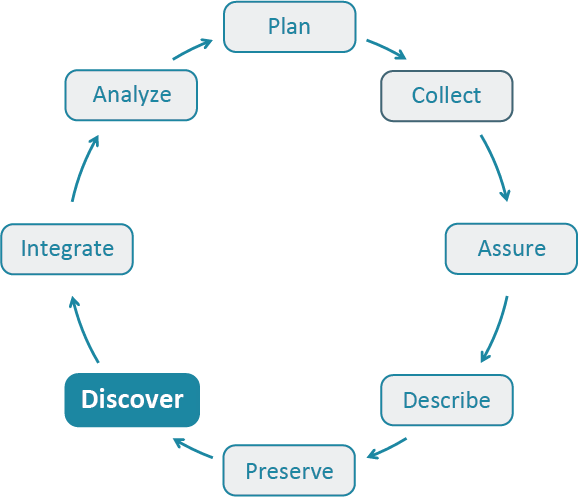Best Practice: Discover

Select a Best Practice below to learn more about the “Discover” stage in the Data Life Cycle.
What is the “Discover” stage?
Identify complementary data sets that can add value to project data. Strategies to help endure the data have maximum impact include registering the project on a project directory site, depositing data in an open repository, and adding data descriptions to metadata clearing houses.
More information can be found in the Best Practices Primer.
-
Advertise your data using datacasting tools
To make your data available using standard and open software tools you should: (click for more)
Tags: access data services discover
Assign descriptive file namesFile names should reflect the contents of the file and include enough information to uniquely identify the data file. File names may contain information such as project acronym, study title, location, investigator, year(s) of study, data type, version n... (click for more)
Tags: access describe discover format
Check data and other outputs for print and web accessibilityTo maximize usability of your data or outputs, ensure that those with impairments or disabilities will still be able to access and understand them. The Web Accessibility Initiative, from the W3C, suggests that those producing content for others consider... (click for more)
Tags: access discover standards
Ensure datasets used are reproducibleWhen searching for data, whether locally on one’s machine or in external repositories, one may use a variety of search terms. In addition, data are often housed in databases or clearinghouses where a query is required in order access data. In order to r... (click for more)
Tags: analyze assure data archives data processing discover provenance replicable data

